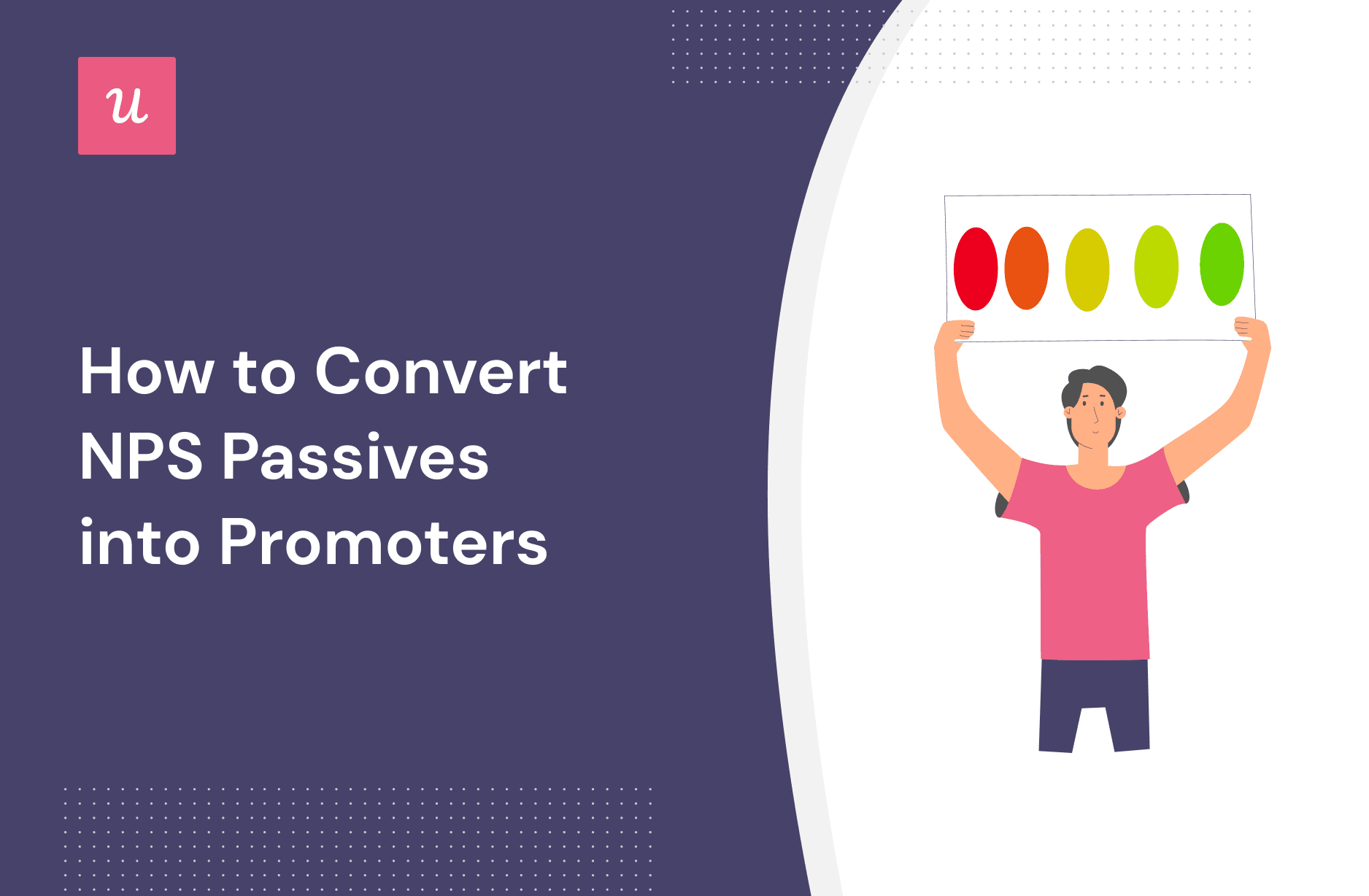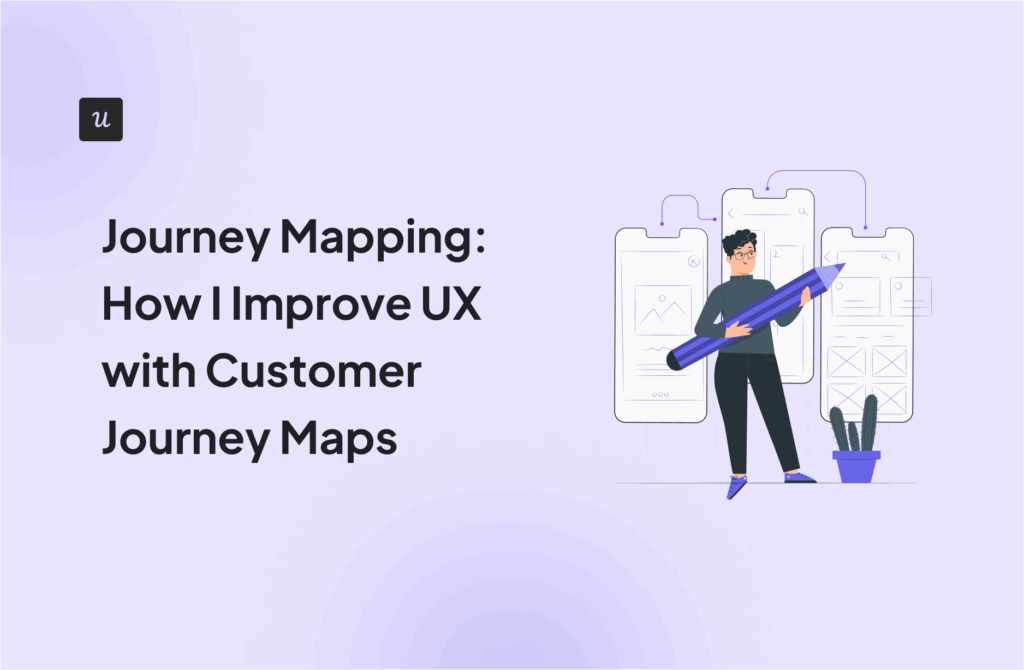
Are your NPS passives holding your product or service’s growth back?
NPS (Net Promoter Score) passives are customers who have moderate feedback about your product but are not enthusiastic supporters. Unlocking the potential of these indifferent users can be a game-changer for your business. Turning the NPS passives into promoters can improve user sentiment, retention rate, and customer loyalty.
In this article, we’ll explore effective strategies to convert NPS passives into enthusiastic promoters who’ll advocate your product or service.
Try Userpilot Now
See Why 1,000+ Teams Choose Userpilot

What is Net Promoter Score (NPS)?
Net Promoter Score (NPS) is a metric that gauges customer satisfaction and loyalty towards a specific company, product, or service by measuring how likely the customers are to recommend it to others.
What are the different types of NPS survey responses?
There are 3 types of NPS survey respondents.

Promoters
In NPS, promoters are customers who enthusiastically advocate for your product or service. They provide a high rating of 9 or 10 on the NPS survey. You can consider them as your fans who are loyal and likely to repurchase from you. Promoters also often become valuable brand ambassadors who bring in new customers through positive word-of-mouth marketing.
Passive customers
In NPS, passive customers are the ones who provide moderate ratings on the NPS survey, typically falling in the 7 to 8 range. These respondents are somewhat satisfied with your product’s offerings, but they lack the enthusiasm and emotional connection like that of promoters.
Passives often have a price-sensitive mindset and continuously evaluate competitive offerings and weigh the overall value they receive. They are also left out of the NPS calculation.
Detractors
In NPS, detractors are customers who express dissatisfaction and provide low ratings of 0 to 6 on the NPS survey. These respondents are not only unsatisfied with their experience but also pose a risk of spreading negative word-of-mouth. You should take proactive action to mitigate brand damage by considering them as threats.
How to identify NPS passives?
We’ll now go through how you can identify NPS passives.
Collect feedback data using NPS surveys
NPS surveys provide a straightforward and efficient way to identify passive customers. To pinpoint NPS passives, you should collect customer feedback by triggering in-app surveys at various touchpoints.

After collecting NPS survey responses, the next step is to analyze the NPS score. You can use NPS software, like Userpilot, to easily and effortlessly categorize customers on an NPS scale. This categorization will help you distinguish between different types of NPS survey respondents and identify the passive customers.
Use product analytics to find potential passive customers
Product analytics provides a data-driven approach to understanding how customers interact with your product’s offerings. It is a valuable tool for identifying potential passive customers, as it offers visibility into user engagement, feature adoption, and product usage.
You should start by monitoring user behavior through product analytics. Tagging specific features within your product will help you track how customers use different functionalities. Analyzing the feature usage data, you can detect changes or trends over time.
Here, the key indicator of potential passives is a gradual decrease in feature usage. Decreased usage patterns could signal waning interest or decreased satisfaction with your product or service.

Measure customer satisfaction to identify unhappy customers
Aside from using NPS surveys, you can also use interaction-based surveys to collect more proactive feedback. The proactive feedback after specific interactions can provide you with insights to identify unhappy customers.
You may use customer satisfaction (CSAT) surveys or customer effort score (CES) surveys for interaction-based surveys. While the first provides insights into specific interactions with the product, the latter gauge the ease of product use or problem resolution.
By using these surveys, you can better understand your customer sentiment. When you get unexpected results from these surveys’ responses, you know who your unhappy customers are.

How to turn passives into promoters?
Let’s look at some best practices to turn NPS passive into promoters to drive business growth.
Ask an open-ended Net Promoter Score question
Asking an open-ended question helps you dive deeper into customer sentiment. For that, you’ll need to include a score-based follow-up question with your NPS surveys.
The follow-up question will be open-ended forms that’ll bring their reasonings behind the score. For example, you can ask the passives, “That’s not bad! Is there anything we could improve?”
The additional open-ended responses enable you to uncover the reasons behind your customer dissatisfaction. Then, you can better deal with the passives with tailored efforts that address their concerns and turn them from unenthusiastic customers into enthusiastic customers.

Analyze and act on NPS survey responses
Analyzing and acting on your NPS survey response is critical if you want to improve customer loyalty by turning passives into promoters. This approach lets you gain actionable insights from customer feedback, identify pain points, and implement targeted strategies to eliminate them.
You should tag NPS survey responses based on their scores and categorize them while analyzing the responses. Then you should analyze feedback patterns to identify if there are any common sentiments or themes from the customers.
The next step is to act on the insights you’ve derived from NPS survey responses. You should close the feedback loop by acknowledging customer feedback and taking appropriate actions to address their concerns or suggestions.

Segment passive customers for personalized offerings
You can segment customers based on their NPS scores and follow-up responses. It offers valuable insights into the pain points and expectations of each segment. Then, you’ll be able to better serve each customer segment’s needs.
After segmenting customers, you may trigger tailored in-app messages to inform them about how you’re addressing their needs. This direct and contextual approach to providing customers with improvement will enhance their experience with your product.
For example, you’ve received feedback on some missing features from some passive customers in the NPS follow-up questions. You can then segment them and trigger in-app launch messages about the schedule for new feature announcements or product updates.

Identify promoters to understand customer loyalty drivers
Another good strategy to increase promoters is to analyze customer loyalty drivers by identifying the present promoters. It helps you understand what aspects of your product contribute to customer satisfaction and loyalty. Then you know what to capitalize on to build a larger loyal customer base.
First, you need to identify the promoters from their NPS responses. You can send them NPS follow-up questions and get feedback on which features they find the most useful.
In addition to NPS surveys, you can closely examine the promoters and monitor their activities. By observing how promoters engage with your product, you can discern which features or functionalities they most frequently use and value. You then need to contextually promote those features to your passives to help them find value too.

Determine happy paths to duplicate positive customer experience
A happy path refers to a user’s steps to achieve the desired result without encountering errors or friction. Understanding and replicating these happy paths are instrumental in fostering positive customer experiences and turning passives into promoters.
First, you should identify the starting and ending events of the promoters’ path or customer journey. After that, you need to look for the paths with the lowest drop-off rates. These paths indicate that most users smoothly navigated through them without any challenges. Then you’ll duplicate these happy paths for other users to make more promoters.

Conduct funnel analysis to identify and remove friction
Another great approach to turn NPS passives into promoters is to conduct funnel analysis to identify the friction points. Funnel analysis allows you to visualize the customer journey from the initial interaction to the desired outcome.
First, you need to map the important touchpoints throughout the funnel to understand the user experience at each stage. This visualization will highlight the potential drop-offs and friction points leading the customers to passives.
After identifying the friction points, the next thing you need to do is to eliminate them. It may involve streamlining tasks within the product, optimizing customer experience, or improving your existing feature set.

A/B test to increase customer retention
A/B testing is a valuable method in any SaaS business to determine what works for customers. Systemically using it to test different variations within your product will help you find the recipe to have more promoters.
You should set goals in A/B tests to determine if certain in-app changes lead to increased customer retention. If it works, you should stick to those variations as these retained customers are your promoters, who make repeat purchases and spread the positive word.
You can set goals to be custom events, like a group of events that represent customer retention. For example, an event signaling retention can be when a customer finishes the onboarding, purchases a plan, and later upgrades to premium plans.

Offer self-service support to provide in-time help
Offering self-service support can ensure timely assistance to your customers and reduce their frustration significantly. It prevents the NPS passives from being dissatisfied because of encountering challenges while using any feature and not getting help.
You should provide self-service resources in various formats to cater to diverse customer preferences. The knowledge base may be video tutorials, written articles, blogs, etc. It’ll empower the customer and help them to find their queries quickly and independently in the way they want.

How to turn NPS passives into promoters using Userpilot?
Userpilot is a powerful tool that helps you collect customer feedback with NPS surveys and take actionable strategies we’ve discussed. If you can properly leverage the features of Userpilot, you can proactively turn your NPS passives into promoters.
With Userpilot, you can effortlessly trigger in-app NPS surveys with the option to create follow-up questions. These surveys let you collect valuable feedback from customers, including NPS passives, with their reasonings.
After collecting feedback, you can easily analyze NPS survey responses using Userpilot’s NPS dashboard and NPS response tagging feature. It enables you to visualize and understand customer feedback data and then find common trends.
Userpilot goes beyond NPS surveys by letting companies create and trigger other types of surveys, like CSAT and CES surveys.
You can also use Userpilot’s advanced product analytics for monitoring and tracking user behavior. With its user segmentation, you can specifically gain actionable insights about the NPS passives to turn them into promoters with targeted strategies.

Conclusion
Converting NPS passives into enthusiastic promoters ensures your product’s growth. By taking a multi-faceted strategy, you can turn these passive customers into loyal customers and brand advocates.
Want to get started with tackling the challenges of NPS passives? Get a Userpilot Demo and see how you can convert the NPS passives into promoters.






